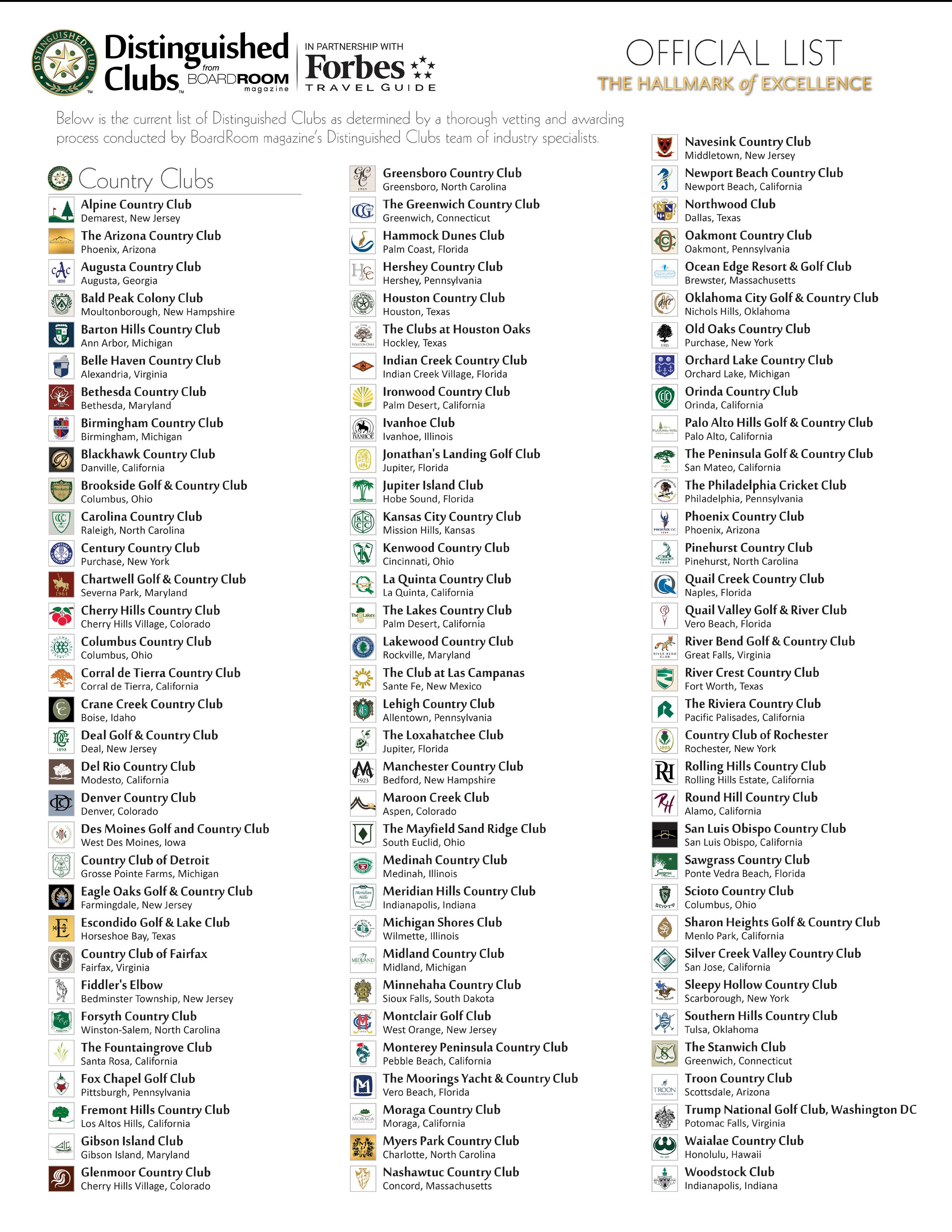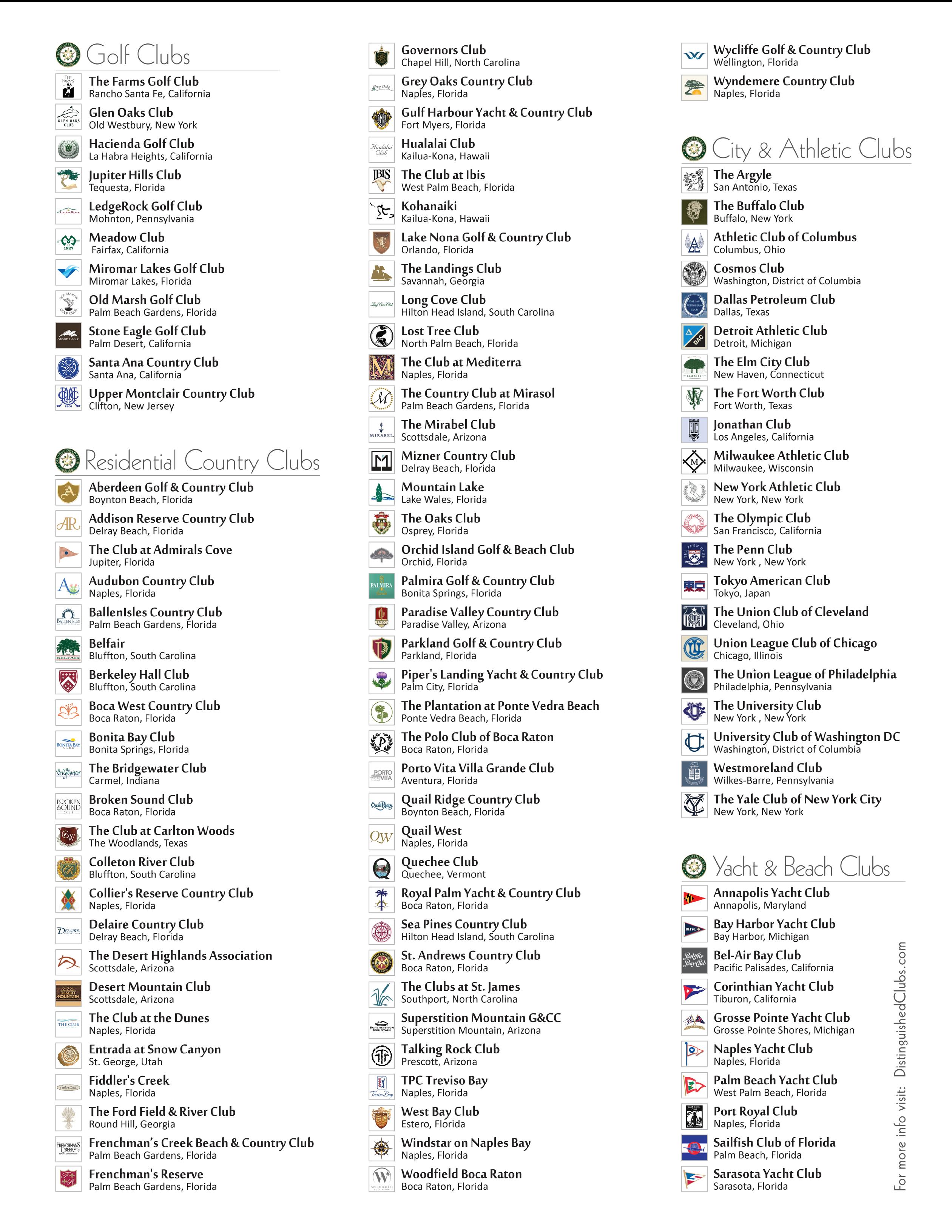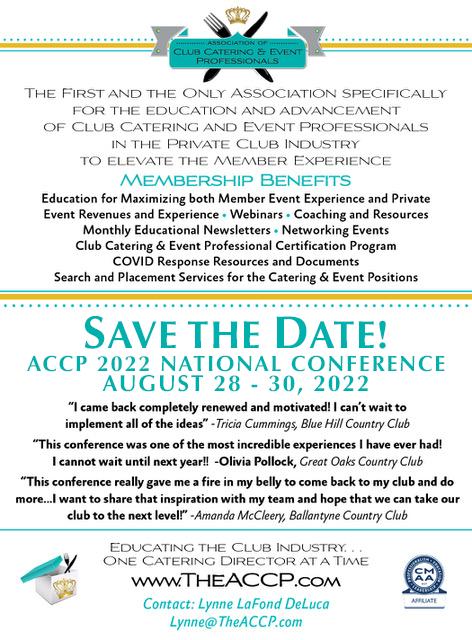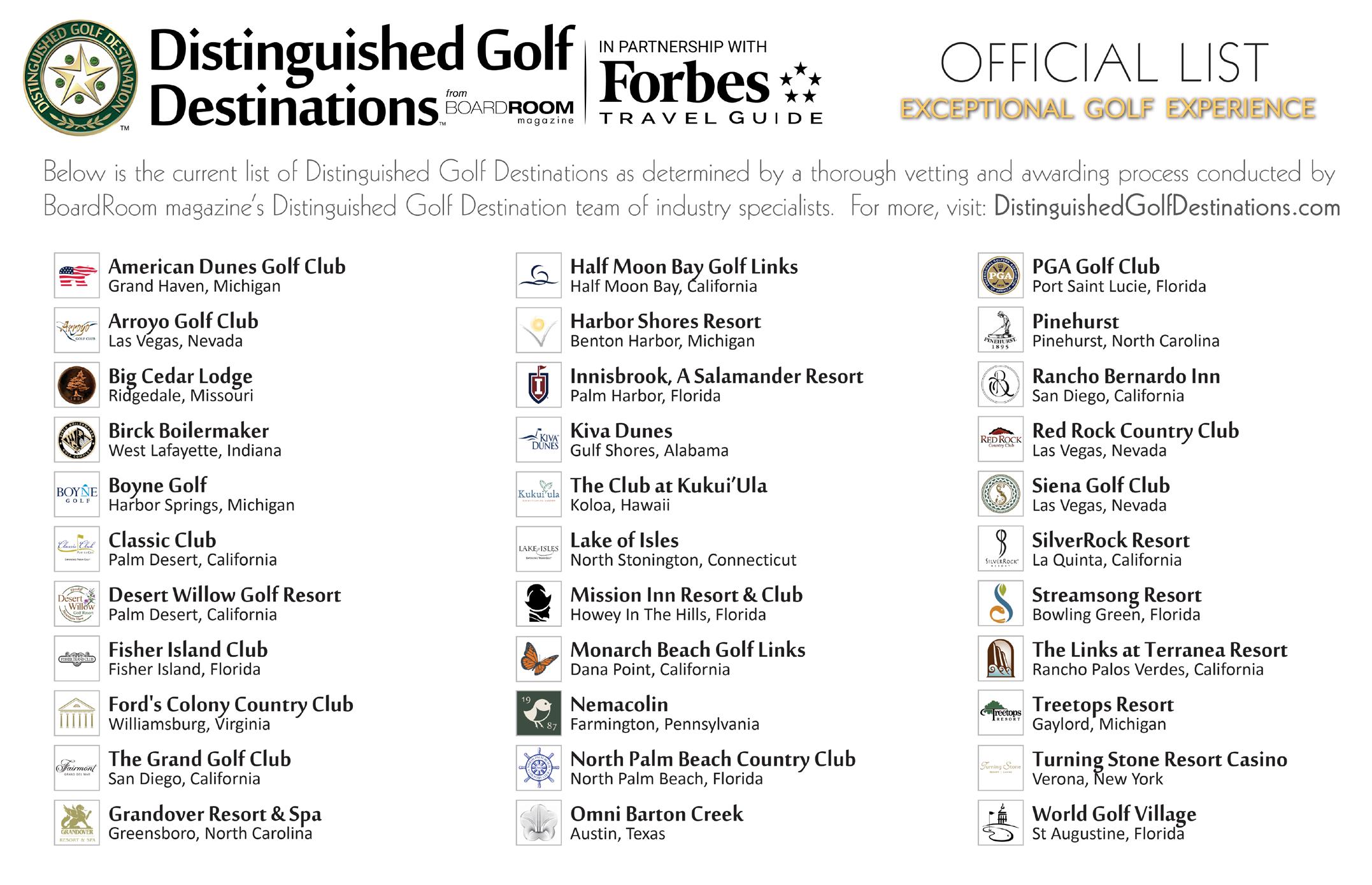
37 minute read
TRIBAL MAGIC
GREGG PATTERSON Gregg Patterson is founder and president of Tribal Magic. He can be reached via email: GJPAir@aol.com
Primed for Politics
Politics “done me bad!”
Lost your job recently or know someone who has? Got the axe in spite of brains, experience and a fluency in numbers, administration and operations? Failed to sell a great idea?
Chances are politics had something to do with your victories and defeats. Politics — the art of decision-making within a group or community when there are conflicting opinions about the decision to be made. Politics are needed to make things happen — and to make those “happenings” stick.
Dictators don’t need politics. Dictators say, others do. No debate. No dissent. “Do” or get chopped. But few boards and few managers are dictators and because they’re not, political skills are a “must have” to survive and flourish.
Politics is an art form driven by relationships, and relationships are fueled by emotions. If people like you, they’ll be receptive to your logic and inclined to agree. And if they don’t, they won’t. Politics is an adventure, a journey filled with risk and uncertainty. Those who survive and thrive in the political jungle do so because they fill their political toolbox with the behaviors needed to make good politics happen.
Consider these tools and do the audit.
HOMEWORK
Know “your wants” and why. Politics are goal-oriented and every encounter has a goal. Generating goodwill? Getting support for a policy or project? Know your goals.
Know your compromise positions. Have a spectrum of goals — big, medium and little. Know which one to pursue, with whom and when.
Know who you’ll need to meet. Target people and arrange “encounters” with the deciders, the influencers, the alpha dogs and the queen bees.
Know “their wants.” Identify what “the other side” wants, why those things matter, the questions they’ll ask, the facts they’ll use and the arguments they’ll deliver. Have “issue awareness.”
Prepare to answer. Create a list of frequently asked questions. Ponder, envision the encounter and practice your answers. Document and inventory. Create an idea bank for future reference.
PREPARE YOUR PERSONALITY
Show “like” and “be like-able.” People will listen if they like you and if they know you like them. No like, no listen. Release your “like” and signal you care. Be authentic. Don’t be what you’re not. Others will know when you are and when you’re not.
Look right. People are receptive to people who look right for the place they’re at and doing what they’re doing with whom they’re doing it. Dress, posture and grooming matter.
Be interesting. People listen to interesting people. Boring shuts down the brain and roadblocks the message. Read more, travel more, write more and meet more interesting people.
Be interested. Prime yourself to show interest in them. Know enough about them so that you can engage in good conversation with them about things that interest them — whether or not directly related to the goal.
Be entertaining. Good ideas and compelling logic can be boring. Brains turn off and ideas aren’t absorbed. Good ideas sink in when they’re delivered in an entertaining way, with enthusiasm, body language and emphasis. Be entertaining.
Be curious. People like people who ask questions and stimulate conversation. Come prepared to ask and listen.
Be a master storyteller. People remember the story and through the story understand the concept. Master the story.
Signal. Body language matters. Know what signals open and shut “the doors of receptivity.” And know their signals and the message they’re delivering.
DO “ENCOUNTER” RIGHT
Warm up. Before “the encounter,” get energized and release your “big happy.” Review your stuff. Take a walk. Sing to yourself. Take a shower. Talk to the barista. Drink caffeine.
Warm them up. Master the “fluff conversation” to get them talking, laughing and feeling good. Small talk is a “must do” before the big talk happens.
Master good conversation. Be focused on them. Look ‘em in the eyes, ask questions, nod your head, listen artfully, expand on their answers then ask another question.
Be respectful. People know when you value them and their ideas. You may disagree but do it respectfully.
Communicate with clarity. Keep your messaging clear and simple, easy to understand and remember.
Focus on them. Show interest in their thinking, needs, wants and expectations.
Avoid sarcasm cause it hurts. You laugh. They don’t.
Acknowledge life moments. Remember and salute birthdays, weddings, anniversaries, deaths. Be joyous, sympathetic or comforting as needed.
Welcome their questions. Ask them to ask you and signal that you want to hear their questions.
Validate their message. “I heard you and appreciate what you’re saying.” Be receptive to their message and give cre-
dence to their thinking. Doing so keeps their defenses in check and their receptivity pathways open.
Avoid corner-ing. People who are put in a “rhetorical corner” get nasty, stop listening, reject everything you say and come out fighting.
Avoid hot buttons. Know what issues, ideas and comments will agitate and enrage them and you. Negative emotions will shut down the conversation. Know your hot buttons and theirs.
Defend respectfully. Anticipate the negatives and the reasons they’ll give. Acknowledge their points and counter in a measured, reasoned way. Never attack and keep your emotions in check.
Be willing to compromise. Accept you won’t always get the optimum. Know how much you can “move” before you’ve lost everything. Prepare to negotiate. Every political encounter is a negotiation. You’ve got ideas. They’ve got ideas. Accept the “give-and-take.”
Educate without lecturing. You know what needs to be known — facts, issues, insights — and you need to convey those insights in an interactive, Socratic way.
Give advice and insight without giving answers. Act like a mentor. Give them understanding and guidance, deliver the nudge, but let them find the answer.
Be balanced. Extremes offend and turn people off. Offensive emotions inhabit the extremes. Acknowledge the strength of the opposition’s position. Let them know that there’s value in their position.
Give credit. Praise the things they’ve done, said or think that deserve a salute and a “well done.”
Keep emotions in check. Don’t lose your temper because temper leads to intemperate sayings. Anticipate the worst so that when it arrives it won’t bruise you badly.
Cool passion. People hear the message when the message is delivered with enthusiasm and conviction. Enthusiasm is good. Too much is bad.
Disagree without denigration. People will bite if you take away their dignity and status. Don’t humiliate during the political journey.
Signal receptivity. Develop body language and facial expressions that let them know “you got it.”
Confidence without arrogance. People want to see that you’re quietly confident without being pushy and arrogant.
Give thanks. For the conversation, for the ideas, for their receptivity to your thinking.
Gracious loser/gracious winner. When losing, acknowledge the victor and when winning, be humble. Accept the decision graciously.
Everyone is a winner. Make sure everyone walks away from the decision with something regardless of “how much.” And remind them of what they got.
Leave no scars. Bruises are remembered when the encounter is done.
And be patient. Agreement grows with time. Politics ain’t quick. Cultivate.
POST-ENCOUNTER
You’ve survived the encounter. Time to ponder. What did you do right? What did you do wrong?
Beak your mirror. Talk to your mentors. Get honest feedback.
Document and inventory those insights.
Send an email, write a note or give a call to those you encountered. Affirm your thinking, acknowledge their thinking and strengthen your case. Burn no bridges.
And prepare for the next encounter.
KEEP PUSHING
Politics are a fact of life. A necessary part of the manager’s journey.
Group decisions need to be made. The deciders disagree. Managers who are armed with the political toolbox can make things happen. And survive the process.
Prepare for the adventure.
And enjoy the journey. BR
DISTINGUISHED CLUBS
ROBIN SHELTON Robin Shelton, CCM, PGA Master Professional, is the general manager of the Newport Beach Country Club, Newport Beach, CA. He can be reached at (949) 644-9550 or via email: rshelton@newportbeachcc.com
To Give or Not to Give
Move Theatre Tickets and Restaurant Gift Cards
Early in my career, my boss wanted to thank me for the contributions and impact I was making at the club, so he gave me a Chili’s gift card and movie theater tickets.
Now my wife and I don’t like Chilis and we haven’t watched a movie in a theater in years. So, he had given me a gift with no value to me and showed he didn’t take the time to truly care about me or get to know me. Instead, he showed me he was going through the motions rather than genuinely caring about what was important to my interest and objectives.
We need to know what is important to our employees in the modern leadership world. We should know how we can help them with their careers, their goals, and what loyalty looks like to them. We should know how they like to spend time off, where they like to eat and what matters to them personally – all things that might bring out the best in our employees and help retain them.
In a recent article published by Hamilton Edwards, an HR consulting company, “the things employees value most” were 1) good pay, 2) job security, 3) promotion/ growth opportunities, 4) good working conditions, and 5) loyalty to workers.
Promotion and growth opportunities seem to be important to all employees. However, I believe educational opportunities are one of the best ‘things’ for employers to consider. In addition to creating a strong culture and precedent at your club about improvement and education, it also contributes to the other items while creating a ‘win-win’ for both the employee and the club.
In today’s competitive labor economy, retention is more important than ever – and finding what is important to our employees should be a high priority. Education and career advancement are something that should be discussed with all employers.
This past year four of my team members traveled to Florida for the BoardRoom Distinguished Clubs Summit to see great clubs and learn new ideas. In addition, five of our staff and I attended the CMAA Annual Conference. Six of our staff attended a PGA TOUR event to see what we could learn and what ideas we could apply to our PGA TOUR Champions event. A number of us also have attended local club educational events to get more connected to our industry and see local clubs.
These education trips and conferences were important to our team members – it has been important to their development and improvement. It added to a culture of improvement and education for the club and led to great conversations about trying to improve our club with multiple people rather than just one.
To our employees at Newport Beach Country Club, career growth, industry knowledge, and networking are important to them – and far more important and meaningful than a Chili’s gift card and movie theater tickets. BR

DISTINGUISHED SUMMIT PICTURED L-R: ROBIN SHELTON, SARAH SANCHEZ, MELANIE STACKLIE, GRAEME BLAIR, ARIC MATTSON


True if you’re the only club that does this. But not so if many clubs join in. The more clubs that deploy this approach, the more the pressure is placed upon the vendors to improve their overall performance.
The bottom line: Small vertical markets tend to spawn specialized software solutions from a handful of small vendors. Those vendors generally have limited motivation to provide outstanding reliability and support.
The squeaky wheel approach is a proven way to increase your club’s chances of receiving timely attention. If adopted
from Green Committee - Straka | 62
For starters, don’t be afraid to reserve your sod right now for 2024. Most sod farmers are small businessmen and they will prove eager to lock in business now, which may save your club some money. That said, most materials agreements include clauses on delivery and transportation. Gas prices are, of course, highly variable and very important to these costs.
Beware the clause that allows for adjustments at the time of delivery. Clubs will want to hardline that detail in any
from HR Committee - Radcliff | 66
The power of synergy
Each of our senses is powerful on its own. Now think about combining two or more senses – the stress relief is amplified. Here are some examples: • Watch a film in your favorite genre in a dimly lit movie theater while holding hands with your loved one and eating popcorn or your favorite movie treats
from HR Committee - Lacey | 68
4. Talent quality as a compelling operational issue
Past — In the ’50s and forward into the early ’80s, talent quality tended not to be “front and center” from an operating perspective. There was an informal belief that a club could access the talent it needed and that these professionals were prepared to do the job when they joined the club.
Present — Talent quality is a sustained operational focus at all prestigious clubs and requires ideas and action from club leaders. The rhetoric about talent quality is enhanced by many actions to develop and retain a club’s professional staff.
There is far more attention to employee training and development, competitive pay practices and flexible benefit programs matching employee needs. All three HR subjects are a major focus of HR and club leadership. Talent quality has moved from “an interesting idea” to a “compelling business proposition” at successful clubs. by many clubs, this approach can also pressure vendors to improve their overall performance.
Of course, adding new vendors to a small vertical market can create badly needed competition for customers, especially if the newcomers enter the fray with top-notch software performance and customer support.
We visited with several new companies that seemed promising at this year’s CMAA World Conference. If you’re considering a change in systems, it might be a good idea to include these new players in your evaluation process. Never hurts to learn what “the new kid on the block” is offering. BR
agreement, in advance. And do lean on your ASGCA-member architect — and your golf course contractor, if you’ve got one in the fold — for help in this regard. Either or both will prove useful advisors in effectively structuring/wording such clauses.
Finally, waiting two full years to break ground on a renovation does more than allow for more meticulous planning and procurement strategies. It will yield more accurate cost estimates. And last but never least, it will give clubs two more years to build up their course-renovation war chests. BR
• Go to your favorite cozy restaurant for the visual and acoustic ambiance, and the sight, smell and taste of your favorite dish • Have cocktails on the beach at sunset with a loved one.
Now it’s your turn. Send me an email with your favorite de-stressing combinations of senses at pradcliff@hideawaybeachclub.org. BR
5. HR moving from a “nice to do” to a “must do”
Past — Thinking about your human resources was considered to be worth doing, and it was. But specific actions often lagged behind the thinking from the ’50s through the early ’80s.
Present — Effective HR policies and practices have become a “must do” because talent quality drives favorable results, partially captured in the overall member experience. Today they are a “must do” because selecting quality people, designing/implementing competitive compensation and benefit programs, developing your personnel and retaining your key people are priorities at the core of a successful club operation. There is no doubt about that fact.
These five themes underscore the importance of HR and its impact on a club’s operating priorities. It has been my pleasure to witness these themes and to be a constructive HR professional for managing them. I have been a positive “force” in HR’s present and I look forward to watching its future unfold. BR

and the volatility of the financial market, it’s hard to know what lies ahead.
What is your club doing to anticipate future member needs? Are you surveying members to better understand their priorities and satisfaction levels? Full membership doesn’t mean an engaged and happy membership.
What is your club doing to ensure new members become loyal, long-term members? Have you enhanced new member onboarding to make sure new members are properly engaged and indoctrinated into club culture?
Historically new members have been “at risk” of leaving the club within the first few years of membership if they didn’t feel a sense of belonging or if they weren’t using the club as much as anticipated.
Clubs must do everything possible to help new members get acclimated with the club, staff, facilities, rules, programs, and the club community. Providing effective orientation and engagement tools for new and current members will create loyal, life-long members.
Surprisingly, few clubs have an organized and dedicated orientation process. A letter welcoming new members into the club, along with a copy of the club’s bylaws, club history and 25 pages of rules and regulations doesn’t cut it.
Clubs should make the effort to create an orientation guide that includes some of the “why” of what makes your club special. While building culture is often an overused term, this is the club’s opportunity to highlight and instill various club practices, values, traditions and strengths from the beginning.
Familiarize new members with various departments and department heads and get them comfortable with how different areas of the club operate and the various amenities and services that are available.
Learning as much as possible about your new members helps you provide a level of service that members expect when joining a private club. Knowing your members’ interests and tastes can help you personalize the member experience. Do they prefer bourbon or tequila? Are they gluten-free? Where did they go to school? What pro or college sports teams do they support?
While clubs attain some of the basic information from new members during the application process, there is so much more information that directly correlates to providing an elevated member experience.
It is also important to evaluate how things have transpired at your club over the past 24 months. Has this sudden unplanned success exposed weaknesses within your club’s overall marketing and operational processes? What could your club be doing to increase brand awareness in the community?
This is the perfect time for clubs to reevaluate the fundamentals regarding their marketing plans. From making sure marketing collaterals are of the highest quality and tell the proper story to potential members, to waitlist policies, membership classifications and offerings, and onboarding strategies for all new members, every aspect of a club’s marketing plan is critical to ensure clubs can navigate through the potential of choppy waters ahead.
While we all would rather sit back and enjoy the smooth seas, now is the time to plan for your club to sustain the potential volatility that will certainly reappear in the future. Club leaders that recognize social, political, and environmental issues and think strategically about their impact on club members and how they use the club will be better prepared for the next big storm.
Commit to frequent and transparent communication with members, employees, and the community at large. Don’t make long-term changes to club rules and bylaws based on short-term circumstances. Adjust programming and marketing initiatives to continuously engage members in all aspects of the club.
Stay focused on the future because even though the seas are smooth now, it’s the clubs that continually anticipate and adapt that ride out rough waters better than those who don’t. BR

Thomas B. Wallace III, CCM, is a partner and search executive and consultant with Kopplin Kuebler & Wallace, an industry consulting firm. Tom can be contacted at (412) 670-2021 and at tom@kkandw.com
Steve Graves is president and founder of Creative Golf Marketing. He can be reached via email: steve@creativegolfmarketing.com
XHIBTZ business cards.qxp_Layout 1 8/25/17 9:32 AM Page 1
WE HAVE A FULL RANGE OF PRODUCTS TO SATISFY ALL YOUR NEEDS
2012 - 2021
POOL FURNITURE • BEACH FURNITURE • UMBRELLAS Steve BerlinCABANAS • PATIO FURNITURE • CUSTOM CUSHIONS
954.614.1505 xhibtz1@xhibtz.com www.xhibtz.com STEVE BERLIN | (954) 614-1505 | STEVE@XHIBTZ.COM WWW.XHIBTZ.COM
• Self-study materials. Provide a list of approved off-theshelf financial planning guides and manuals that are carefully tailored to the employer’s particular benefit plans and financial planning. • Booklets, bulletins, and newsletters. A series of concise, periodic publications that address different financial planning topics. • Videotapes. Either online or supplied by the club.
• Individualized computer search.
from Executive Committee - Hirsh | 36
important to consider whether future members will use the facilities more or less.
Now comes the tricky part. Are members willing to pay more for increased access if the club limits membership to a desired level to control play? This is often where the most important question about club culture surfaces. Is the membership culture one of ownership or are members largely customers?
Those memberships that take ownership in their club (regardless of whether the membership owns it or an investor) are typically inclined to improve the club, pay for enhancements and access, have pride in their club, consider the future membership and take good care of the golf course and other facilities (replace divots, rake bunkers and fix ball marks). They are usually respectful and courteous to staff and management.
Conversely, at clubs where the membership thinks more like customers, customers complain about most expenditures, resist any cost increases or assessments, care only about the impact on themselves and consistently seek to let the next generation “pay for it.” They rarely care about the elements of the club they may not use.
It doesn’t take rocket science to see that a club’s culture can impact its economics. While no-ownership culture clubs can (and often do) overspend and get into a financial hole, the customer culture can avoid even the most necessary investments to a point where (like the old “pay me now or pay me later” commercial) the club declines past the point of no re-
from Technology Committee - Coughlan | 38
As a technology provider, Jonas Club Software focuses heavily on our security standards, implementing company-wide policies, in-depth staff training, and continually improving our data security standards.
Recently we obtained SOC 2 Type 2 Compliance, a standard developed by the American Institute of Certified Public Accountants which specifies how organizations should manage customer data.
Even with these measures in place, those with malicious intent will ensure that no security practices remain impene-
Dietz suggested that “policy implementation and follow-through is dependent on strong conversation between the president, board and the COO/GM. Methods to inform, educate, and motivate individuals in turn use a trickle-down approach.”
Your capital is at risk when you invest – you can lose some or all of your money. Never risk more than you can afford to lose. BR
turn. This is often how clubs become housing developments.
In “The Culture of Golf – Isn’t It Just a Game?” I write: ”Historically, private clubs have been an oasis of decorum and politeness. Many clubs attempt to create a welcoming and friendly atmosphere. Others seemingly seek to establish rules and policies attempting to develop prestige that are often perceived as ‘stuffy.’ Still others, attempting to elevate their reputations foster an air of superiority while attempting to display (an often insincere) culture of warmth.
“Anyone who’s visited many private clubs can attest to what I call the ‘country club wave’ where members might acknowledge others with a wave of the hand while not even looking at them. Private clubs can be the most comfortable places and at times the most awkward. At some clubs it seems as though the goal is to make guests as uncomfortable as possible. Each club has its own unique culture.”
How important is a club’s culture? Pretty darned important. It not only determines the atmosphere and appropriate target market for a club, but also has a tremendous impact on the club’s economics and its prospects for success, often being the difference between a prospective member joining one club versus another.
The physical quality of a club is critical, but a reputation for having the wrong culture for the prospective member can be deadly. Having an independent assessment of your club’s culture can help establish the path to success and for informed and rational planning for the club’s future. BR
trable forever. The only solution for our business and yours is continuous improvement.
The sad truth is that due to the socioeconomic standing of club members, and the fact that clubs have long been slow to adopt rigorous security standards, the club industry is becoming an ever more popular target of cyberattacks.
Data security can seem overwhelming, but the alternative can be disastrous. Clubs should start by doing the small things right and, wherever possible, make security a focal point. After all, data security should be considered a member service, too. BR
Although sometimes, there may be one or two other board members who are too focused on daily management areas,” injected Dick Kopplin, principal with Kopplin Kuebler & Wallace, an industry consulting firm.
“Regardless, micromanagement is very prevalent today,” said Matthew Linderman, president, Boca West Country Club in Boca Raton, FL.
“The reality is that it becomes a disease if not properly handled and stopped early on. Micromanagement can be avoided if the board/management relationship is strong and mutually respectful.
“However, micromanagement is the unfortunate result of board members not allowing themselves to trust their COO/ general manager and staff fully. Whether it’s because of a lack of communication or that the board prefers to have a tight handle on operations, micromanagement can destroy the board/management relationship. To me, a successful board/management relationship results from a trusting partnership between individuals working towards a common goal that has been thoroughly discussed and presented to one another,” Linderman explained.
“Micromanagement means a great deal of stress, frustration, and burnout. Often clubs end up with boards that micromanage because the general manager does not speak up early or often. A general manager needs to be a leader and exude leadership skills,” exclaimed Brett Morris, general manager of The Club at Admirals Cove, Jupiter, FL.
“Boards are looking for that direction, but it opens the door to micromanagers when a GM doesn’t speak up. Unfortunately, it’s quite prevalent because many GMs are reluctant to push back and offer an opinion based on experiences.
“Most board members rest on their past laurels and success, but it’s important to remember that they lack the operational expertise needed to run a private club. I often remind my board members that they were elected to represent the greater good of the club and not their agendas. And that they don’t own every problem,” Morris added.
TELLTALE SIGNS
What are telltale signs of micromanagement?
“When someone is constantly on your back nitpicking your work. Boards micromanage when they don’t trust the management to execute their goals and objectives when they have been clearly defined,” McCarthy stated bluntly.
“Micromanagement starts when the board as a whole or individuals on the board believe that the general manager or their team are not performing correctly. Then, the board starts to question operational decisions that the GM is making or the department heads challenging ‘why’ or pushing for changes’ just because,’” explained Linderman.
“This lack of trust comes from board committee chairs and board members not being aware of situations the GM is handling or broad strokes of topics being decided upon down the road. Many times, a ‘risk assessment’– shared with the board yearly – of hot topics that the GM is working on over time will show board members that there is awareness and roadmaps for addressing these topics and concerns.
“When board members are insistent on micromanaging, it becomes a disease and the club’s morale – for staff and members – plummets. Individuals begin to feel unimportant and not trusted, which results in a loss of passion for their position and costly turnover,” he explained.
“Private clubs often suffer the inefficiencies – and sometimes corrosive – effects of micromanagement when a director or group of directors seek to become unduly involved in operational matters,” DeLozier opined.
“The most common circumstances of micromanagement arise when the club manager does not keep club’s directors adequately informed about operational matters and sometimes when directors lack an understanding of established standards of board conduct.
“Many directors forget that their primary board duties are leadership, strategy, finance, and governance.”
However, DeLozier suggests several telltale signs originate in the boardroom itself when: • Directors consider operational and tactical matters to be appropriate to the board agenda. The board chair must focus board members on the board’s primary responsibilities and steer them away from operational involvement or direct supervision of people, projects or properties. • Directors become unduly involved with individual employees to the extent that any employee considers the director to be their supervisor. (Often, the director so involved incurs personal liability in such dealings.), and • Directors construe or assume the authority of a management staff member.
“Sometimes boards don’t realize they’re micromanaging,” explained APCD’s Welch, “while others don’t entrust the GM to get things done. Sometimes it’s a personality problem and/or confidence and communication issue.
“Telltale signs include board members quiet communication outside of meetings; members or board members giving direction to staff members and even staff not following managements direction because they had direction from a member,” Welch added.
So, what issues arise when board or committee members insist on micromanaging?
“The cost of micromanagement is huge,” Welch emphasized. “Usually, a GM that is being micromanaged will start to look for a new job, or senior staff will take other jobs. It’s also degrading to the management team.
“Morale is damaged and the staff members gossip about the ‘lame duck’ management. As a result, management loses confidence in decision making and service and direction suffer,” he added.
“The worst effect of micromanagement is the blurring of the alignment between authority and accountability. When a director reaches beyond their authority - based upon the club’s governing documents - and assumes the role of instructing ordinary employees performing the responsibilities, the chain of command is broken and accountability is sacrificed,” DeLozier stressed.
“Board members are seldom held accountable for micromanagement, although their actions - or inactions - can adversely affect the club’s financial or operational performance. Authority is issued by the board to the manager and is rendered meaningless when a director - who has no level of accountability for the operational budget or performance - intrudes on the manager’s authority,” he opined.
“Look for the warning signs. Those include board members trying to undermine what the GM is trying to accomplish,” injected GM Morris.
“They try to create divisions amongst members and even management. They try to gain leverage over the GM instead of treating the relationship as the partnership it is supposed to be. So, when this happens, or you think it’s happening, it’s crucial to nip it in the bud.
“We all live in a feedback-rich environment; however, you can never let emotions take over. If a board member insists on micromanaging, use your data to support your decisions. Remind them why they hired you and the importance of the club’s governance to set the correct path forward. They are there for oversight, strategic planning, and supporting the GM,” Morris added.
And the effect?
“Demoralization. The insinuation that the board or individual board members believe that they could and should intrude is disappointing in the extreme. The message to the management team is clearly that they should be shopping for another job because their board members lack faith in supporting their efforts,” DeLozier emphasized.
Board members’ roles and responsibilities are another important factor.
“Volunteer leaders also tend to get into micromanaging because they clearly don’t understand their roles and responsibilities,” said Addison Reserve’s McCarthy.
“Unfortunately, over the years, I’ve seen too many volunteer leaders run for positions of authority to drive their agenda or that of their small group of friends. When this type of micromanaging occurs and the lines of authority get blurred, it usually leads to chaos in the organization.
“When micromanaging becomes an issue and not addressed, club staff and senior managers usually get very frustrated. High turnover usually results in clubs with excessive micromanaging,” McCarthy added.
“The club industry has always been challenged with recruiting and retaining top talent. There are too many opportunities for great employees. Therefore, they don’t need to accept it (the micromanaging) and they just move on. ➤

COUNTRY CLUB TECHNOLOGY PARTNERS
Technology Planning for Private Clubs
• Technology Master Planning • Club Technology Report Cards • Cost Reduction / Audits • Hosted IT Solutions • Surveillance Cameras • Cyber Security Analysis
www.cctechplan.com | contact: noel@cctechplan.com

“When excessive micromanaging occurs at the board and committee level, it weakens the entire organization. That is the same for a paid manager that is doing it (micromanaging) within their department.
“We either trust or empower those employees to execute the club’s goals, or we don’t. In addition, I’ve witnessed very weak micromanaging boards chase away incredible paid leaders. The result usually winds up being a weak micromanaging board with a weak micromanaging leader – a disastrous result for a club. No membership deserves that,” McCarthy declared.
“Micromanaging board members can ruin your club culture and kill morale. In addition, the approach ends up alienating employees, which leads to employee burnout,” added Admirals Cove’s Morris.
“When confronted with a micromanaging board member, I pull that person aside and discuss their goals and objectives. This allows them to feel heard and then share an open dialogue where I explain the importance of the board-GM relationship. The bottom line is the number one rule, and the only rule is that the board does not manage an organization but ensures that the organization is well managed by the following: 1. Hiring the best 2. Supporting the best 3. Retaining the best 4. Holding the best accountable 5. And getting out of their way.”
“Although not often in my career, I have experienced micromanaging in the form of being questioned and second-guessed, which is common,” explained Boca West’s Linderman.
“However, when someone questions your decision or opinion for input in a positive and inquisitive tone, it can result in a positive and even better solution to a topic or a problem. When the questioning becomes constant, it will become overbearing, thus making it a crutch that can make one feel as if their professional opinion is not appreciated or, more importantly, not trusted.
“Micromanagement becomes a disease for the general manager and the club’s staff when their hard work goes unnoticed, not appreciated and ultimately they feel undervalued, which causes team members to look for employment elsewhere. The current ever-changing hospitality and club industry is difficult enough,” Linderman added.
“When a general manager tells me micromanagement is an issue, I always ask about the new board member orientation process and I want to know specific details,” Kopplin explained.
“If there isn’t a robust program for introducing board members to their roles, there will probably be some degree of micromanagement. The new board member orientation process is the golden opportunity for every general manager to ensure that every new board member clearly understands their role as strategic partners and not operational partners.
“The process should include the typical paperwork, including past financial statements and past board minutes, and any written descriptions for board member and committee member roles. More importantly, every new board member will be introduced to each department manager and their entire team as they tour the respective areas of the club. Each department manager will have the opportunity to showcase what they do daily to serve the membership and how they report their progress to the general manager,” Kopplin added.
“Following the tour of club facilities, the general manager and club president will explain that each board member will chair a committee and the general manager will guide them through their meetings and responsibilities. The committee work can then be reported to the board on an organized and regular basis. Attendance at this orientation should be a requirement before any new board member is allowed to attend a board meeting.
“In our experience, if a club president or board member is engaged in micromanagement, there is typically one of two results: A good general manager will eventually leave the club, which is unfortunate. Or the second outcome will be a mediocre manager who tolerates that behavior and will stay. That’s an even worse outcome for the club. Either way, micromanagement is a lose/lose proposition,” Kopplin emphasized.
So, what are solutions to micromanagement?
The solution to micromanagement is ‘don’t do it’, and here are three steps, DeLozier suggests are productive for boards with members who want to micromanage: 1. Execute an ongoing board orientation and training process which emphasizes board authority and discipline. Many consultants and advisory professionals working with club boards will freely provide this type of support. 2. Develop a board policies manual, which guides board members in the proper governance of a private club. The BPM is the guiding tool that helps most private club boards. 3. Regular board-performance evaluations enable board members to self-police and guide one another in clubs where micromanagement is evident. This peer review helps keep all board members on their ‘A’ game.
“General managers must communicate to the board monthly and consistently in terms of projects that are in the works,” stressed Linderman.
“The more included that the board members feel, the more confidence they can place in their general manager’s insight and handle on operations...not getting into the ‘nitty gritty’ but from an overview and summary standpoint. When
the general manager doesn’t keep the board in the loop on certain operations, especially like construction projects, financial obstacles and even larger events that are being considered, they become worried that they need a tighter grasp on what’s going on,” he said.
“We can all relate to examples. However, our board and committee members and management at Addison Reserve are truly committed to understanding their roles and responsibilities. A responsibility matrix with clear lines of delineation defining who makes what decisions is the best tool any club can adopt,” McCarthy concluded.
PUBLISHER’S FINAL THOUGHTS
Micromanagement by the board is the number one complaint from general managers. Yet, the GM could be the one to get the board members to stop. So, why don’t they? For some GMs, it’s a fear – the fear that an informed board of directors might be a bad thing. Other GMs may have many different reasons, but what I do know, after 25 years in the private club industry, is that an informed board can reduce micromanaging.
It starts with the new board members’ orientation. • What is the board member’s role in the club. • What are their responsibilities? If this isn’t clear and understood, board members assume their job is to roll up their sleeves, do what they do best, and get things done.
• What are the appropriate roles and procedures with the board and staff.
Micromanaging is like a disease that comes from a few control freak board members. Micromanaging boards are not evil demons sent to make your life miserable. Board members care. They are scared, and often they don’t know what else to do.
I started BoardRoom magazine 26 years ago to replace emotion with facts and with the objective of reducing micromanaging. Your board must be informed and updated regularly about the club industry and the many challenges a GM faces in running a successful club.
Start by informing your committee members, not just the board members. Some committee members will be on the board one day, and some will become your board president.
Beginning their education before they become board members means you’ll have a better-informed board once they start their tenure as board members.
BoardRoom magazine has created the digital committee version of BoardRoom magazine. Call us at (949) 715-0669 to get your entire board and committee engaged with BoardRoom magazine.
At least, that’s the way I see it. BR
John G. Fornaro, publisher


BY VERDIN
www.verdin.com | 800-543-0488

239.596.8551 | wegmandesigngroup.com
HIDEAWAY BEACH CLUB
BOARDROOM MAGAZINE ADVERTISING INDEX
ACCP ...................................... 125 Addison Law................................. 11 Ambassador Uniform......................... 73 APCD .................................. 108-109 BoardRoom’s Distinguished Clubs.....117, 118 & 119 BoardRoom’s Distinguished Golf Destinations.. 127 BoardRoom Subscriptions.................... 123 Bozeman Club and Corporate Interiors ..........8 Big John Grills ............................... 75 C2 Limited................................... 75 Castor Design................................ 27 Club Benchmarking...........................43 ClubDesign Associates . . . . . . . . . . . . . . . . . . . . . . . . 33 ClubTec . . . . . . . . . . . . . . . . . . . . . . . . . . . . . . . . . . . . .45 Colbalt Software............................. 25 Concert Golf Partners.........................69 Country Club Technology .................... 125 Creative Golf Marketing ...................... 19 Denehy Club Thinking Partners ................93 Emersa Waterbox ............................ 37 Ethos Club & Leisure.......................... 11 Eustis Chair.................................. 81 FOOD-TRAK .............................. 50-51 Forbes Travel Guide .......................... 57 GCSAA ..................................... 131 Gecko Hospitality ............................ 61 Golf Business Network..................... 52-53 Golf Property Analyst ....................... 115 GSI Executive Search ..................... 11 & 41 Harris Interiors HINT...........................6 Heritage Golf Group ........................... 3 High End uniforms ...........................97 HFTP ....................................... 47 Hilda Allen ..................................95 Jonas Club Software.......................... 15 Kennis ......................................96 Kopplin Kuebler & Wallace ................ 5 & 39 Marsh & Associates (MAI) ..................... 23 McMahon Group ............................. 13 MembersFirst................................29 NanaWall ................................... 35 Newstation.com .............................67 Northstar .................................. 132 Peacock + Lewis ............................. 81 PGA ........................................ 17 PHX Architecture............................. 33 Pipeline.....................................63 Proform Matting............................. 91 Rogers McCagg ..............................79 RSM ........................................95 Strategic Club Solutions........................ 2 SYZYGY + AZENCO ........................... 31 Triumph Group ..............................49 Troon Privé..................................65 USPTA ........................................ WauSau Tile ............................ 54-5573 WebTec .....................................45 Welch Tennis ................................ 77 XHIBTZ .................................... 121
BOARDROOM MAGAZINE COUNTRY CLUB INDEX
Nancy Berkley, green committee and marketing committee, Frenchman’s Creek Beach & Country Club, Palm Beach Gardens, FL Bertrand Bouquin, director of culinary, Desert Mountain, Scottsdale, AZ Kris Butterfield is director of membership, communications & public relations, Bethesda Country Club and president of PCMA. Michael A. Chase, Jr., GM, Atlantic Beach Country Club, Atlantic Beach, FL Jarrett Chirico, USPTA, PTR, PPTA, PPR, PPTR, director of racquets, Royal Oaks Country Club, Dallas, TX. Mark Constantinou, GM, Westmoreland Country Club, Wilmette, IL Ryan Cozzetto, GM, Wyndemere Country Club, Naples, FL Charles “Chuck” Cramb, President, Wianno Club, Osterville, MA Chris D. Crawshaw, President, Westmoreland Country Club, Wilmette, IL Sheila Crump Johnson, CEO, Salamander Hotels and Resorts Greg Devino, GM/COO, Broken Sound Club, Boca Raton, FL Damon DiOrio, CEO, Desert Mountain, Scottsdale, AZ Ron Drapeau, President, Wyndemere Country Club, Naples, FL Jaime K. Eaton, President, Atlantic Beach Country Club, Atlantic Beach, FL Brandon Johnson, club manager, Farmington Country Club, Charlottesville, VA Dr. Bonnie Knutson, the Country Club of Lansing and the Michigan Athletic Club Mark Krebs, GM, Wianno Club, Osterville, MA David Lacey, two-term member of the board of governors, Philadelphia Cricket Club, Philadelphia, PA Nancy Levenburg, member, Spring Lake Country Club, Spring Lake, MI Ben Lorenzen, creative director and director of aquatics and fitness, Champions Run, Omaha, NE Joseph Murray, president, Scioto Country Club, Columbus, OH Kasey Patterson, director of fitness and aquatics, Farmington Country Club, Charlottesville, VA Pamela Radcliff, SHRM-SCP, CAM, director of human resources, Hideaway Beach Club, Marco Island, FL Duncan Reno CCM, CCE is the GM/COO at Del Rio Country Club Darin Riggio, CHSP, director of sales and marketing, Innisbrook, Palm Habor, FL Robert Sereci, GM, Medinah Country Club, Medinah, IL Amanda Sprenger, director of food and beverage, The Country Club at Mirasol, Palm Beach Gardens, FL Lindsey O. Tafolla, director of communications and marketing, Houston Racquet Club, Houston, TX Greg Wolf, GM, Scioto Country Club, Columbus, OH




